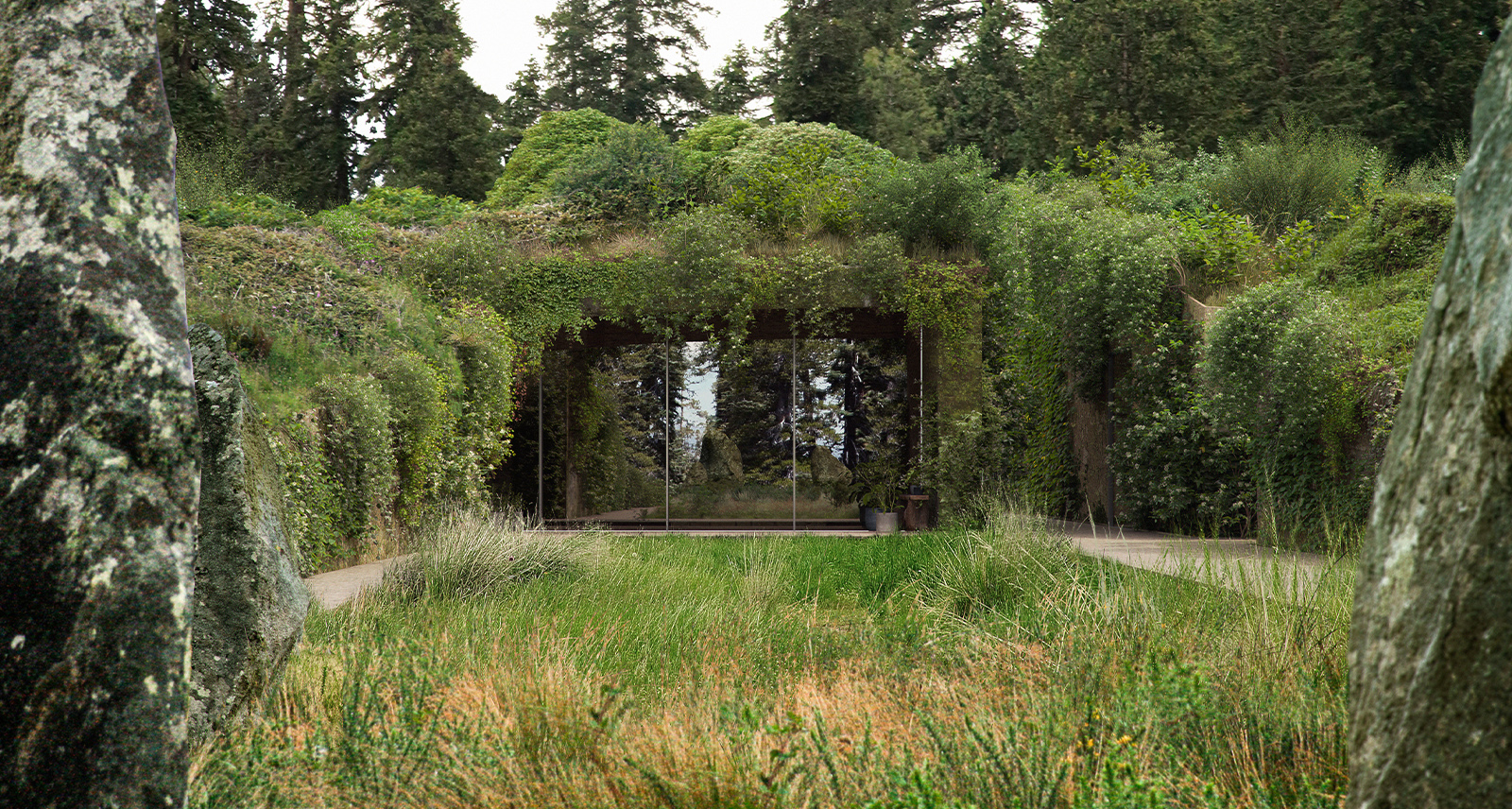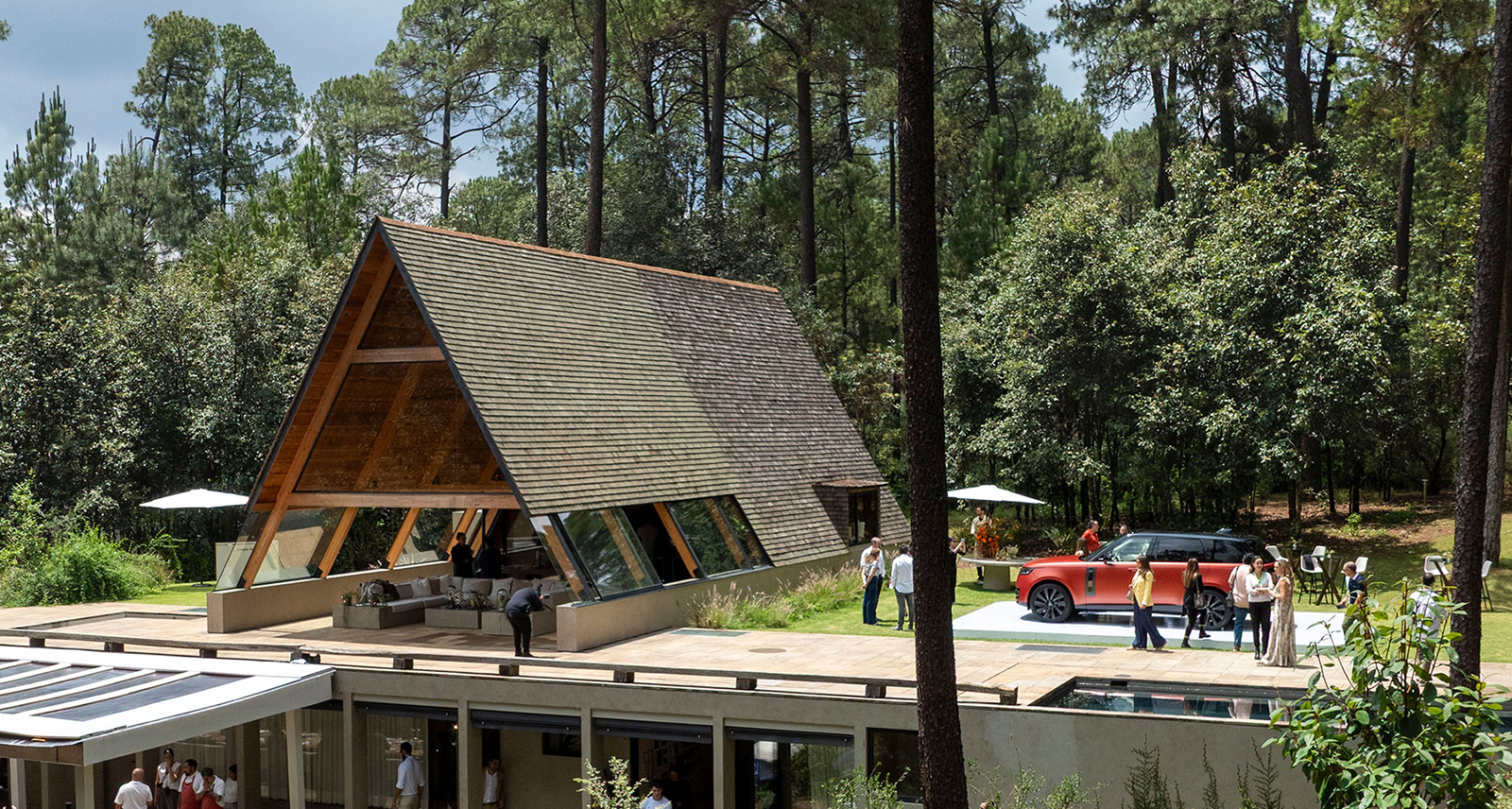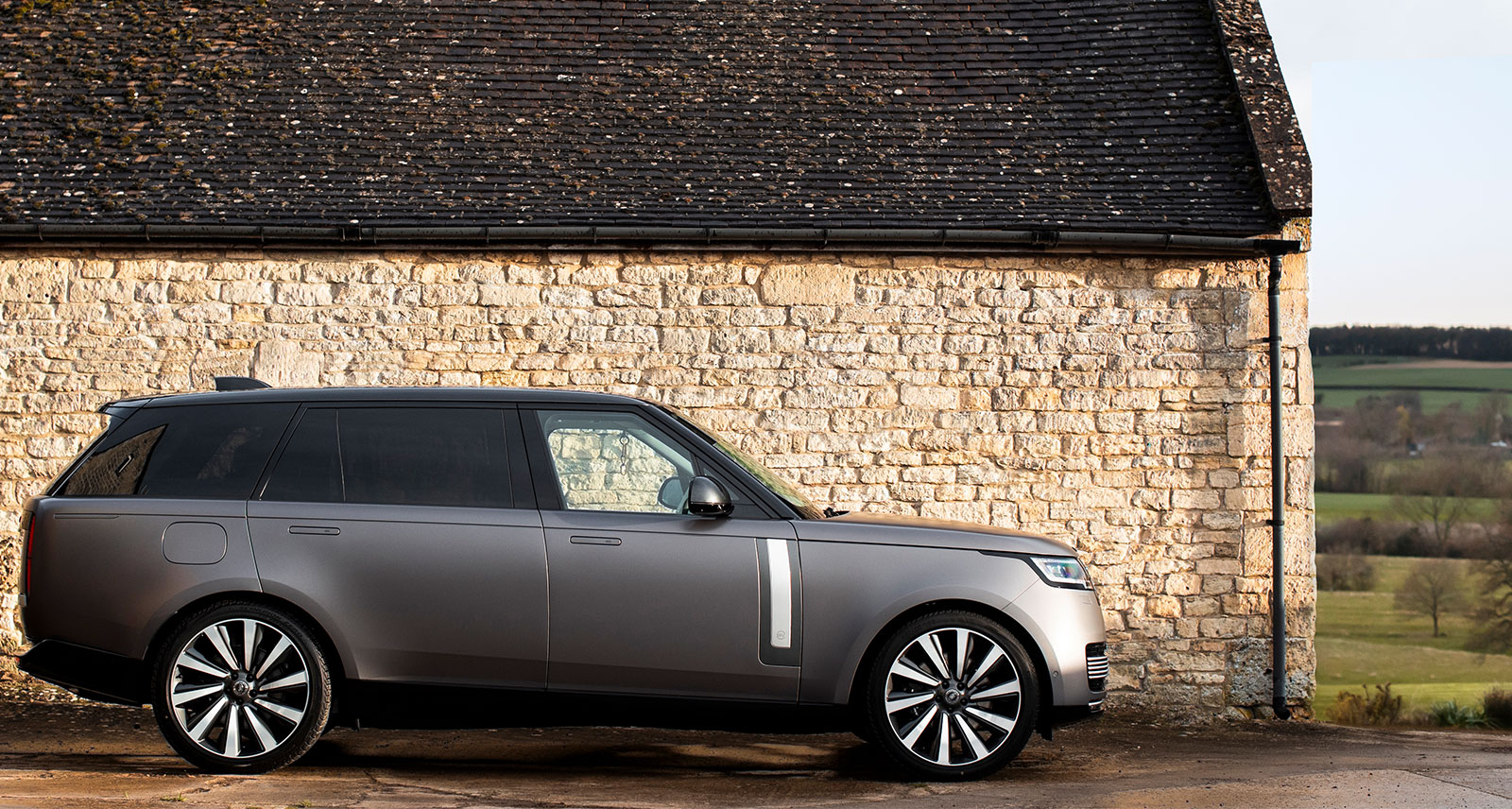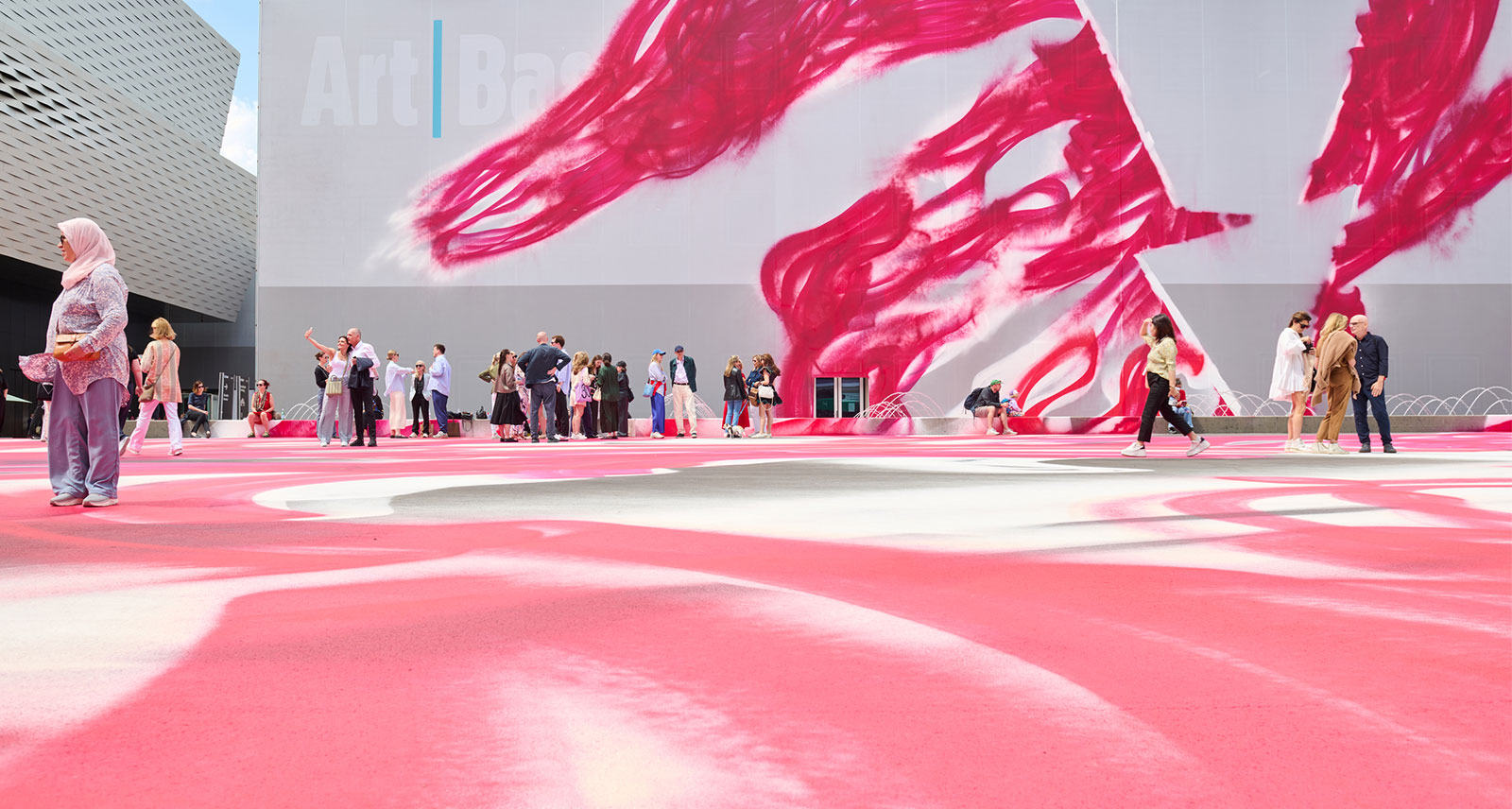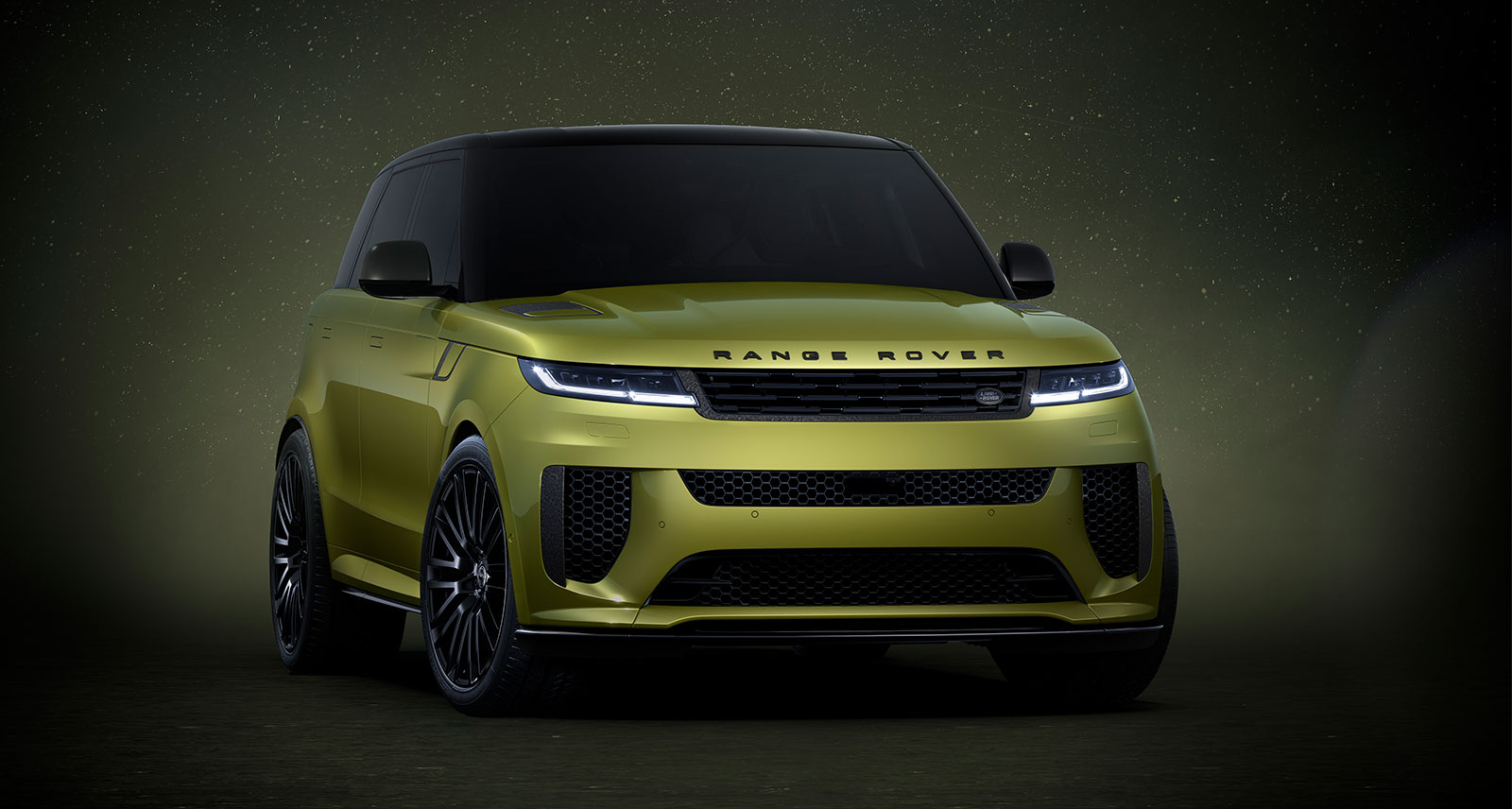A Bjarke Ingels Escape On Vollebak Island
Bjarke Ingels Group (BIG) is pushing the boundaries of design with an off-grid concept that doubles as both a self-contained ecosystem and a feast for the eyes. It’s still in the ‘idea’ phase, so you’ll have to imagine as you sail towards the lush green Vollebak Island, over the icy waters on Nova Scotia’s eastern shore. This idyllic Arcadia could soon become the birthplace of an epic environmental-hospitality project. The vision is ambitious; natural materials spin a web of eco-friendly structures. Sprawling the length of Vollebak, the idea synthesizes art with architecture, house with village, and nature with technology. Intrigued? We thought so.
Split into two structures, the idea adorns the entirety of the island; from inside the enviro-oasis, guests will see stunning views Nova Scotia’s Jeddore Harbour. The larger section, aptly titled ‘Earth House,’ clocks in at just under 600 square metres. The concept links nine buildings together in a compound-like fashion. Out on the eastern edge, a triangular, standalone suite — ‘Wood House’ — complements the island’s network.
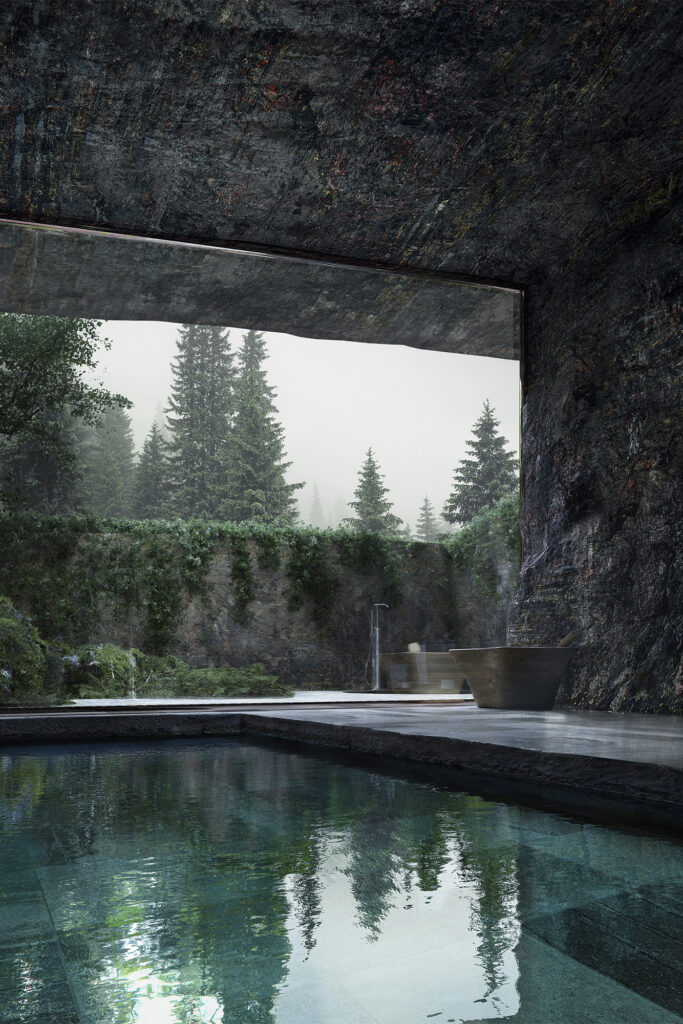
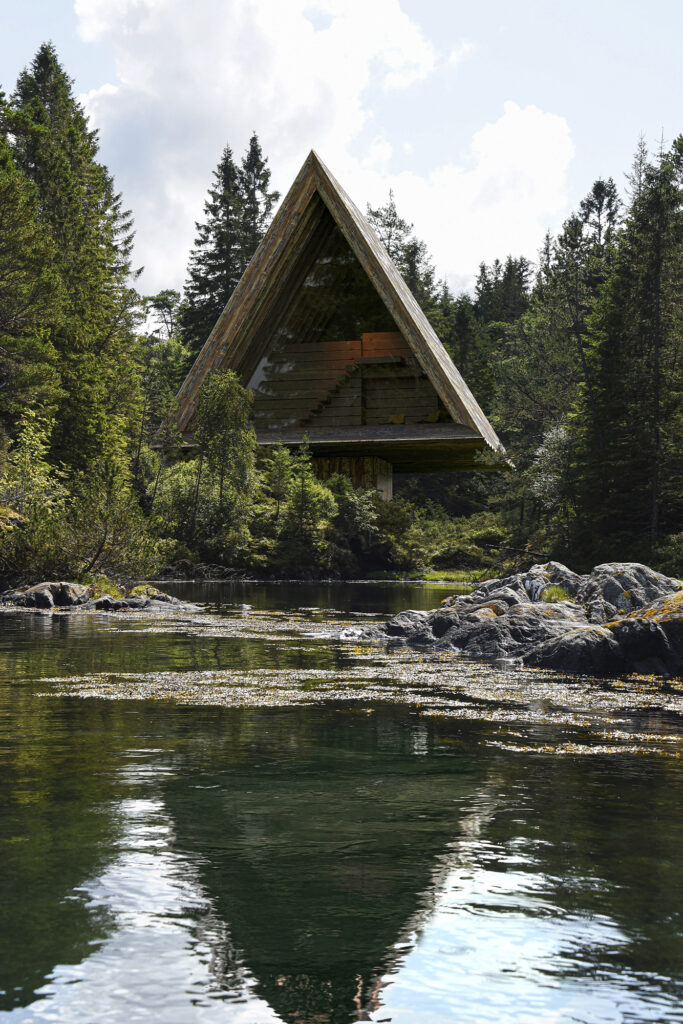
In the render above, you can almost see the turquoise waves ripple over shining hemlock reflections. The premise — an outdoor dream — is seamlessly integrated with natural scenes, right down to the material. Each room will play host to a unique blend of environmentally-conscious construction: glass brick, stacked seaweed, and hemp products will make up the walls of Earth House.
These unconventional building blocks gesture towards BIG’s core philosophy, dubbed: “Hedonistic Sustainability.” What does that mean? In a nutshell, it’s luxury reimagined. BIG centres modern environmental needs, while refusing to compromise on the indulgent principles of high-end design. The walls, for example, store energy from offshore wind and solar power — they’ll be a 100% carbon-neutral affair. It’s part of a larger push by luxury brands to establish themselves as leaders in sustainability, offering quality-first designs that double as innovative feats of environmental engineering. Early footholds like BIG’s shape the market; by integrating woodland scenes with high-quality, eco-conscious concepts, the firm makes environmentalism feasible and attractive — even in luxury spaces.
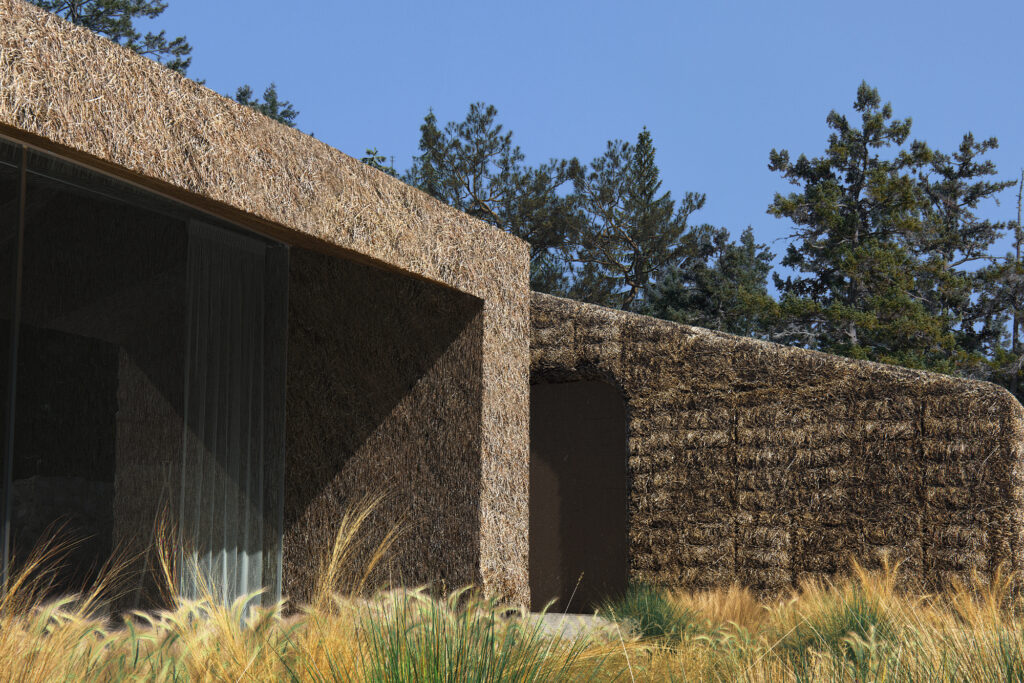
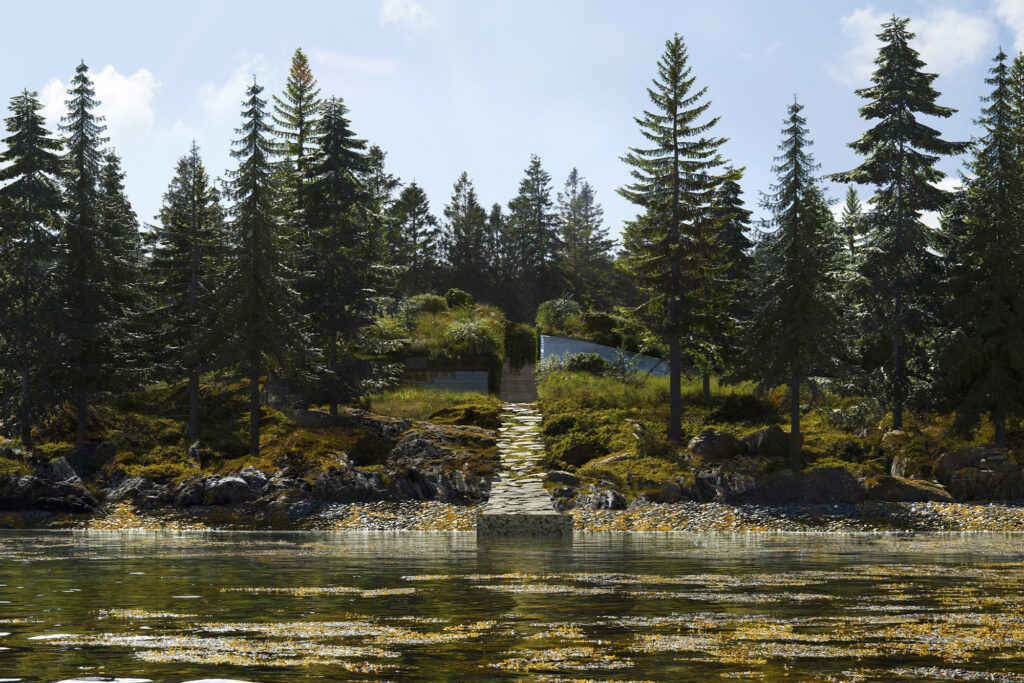
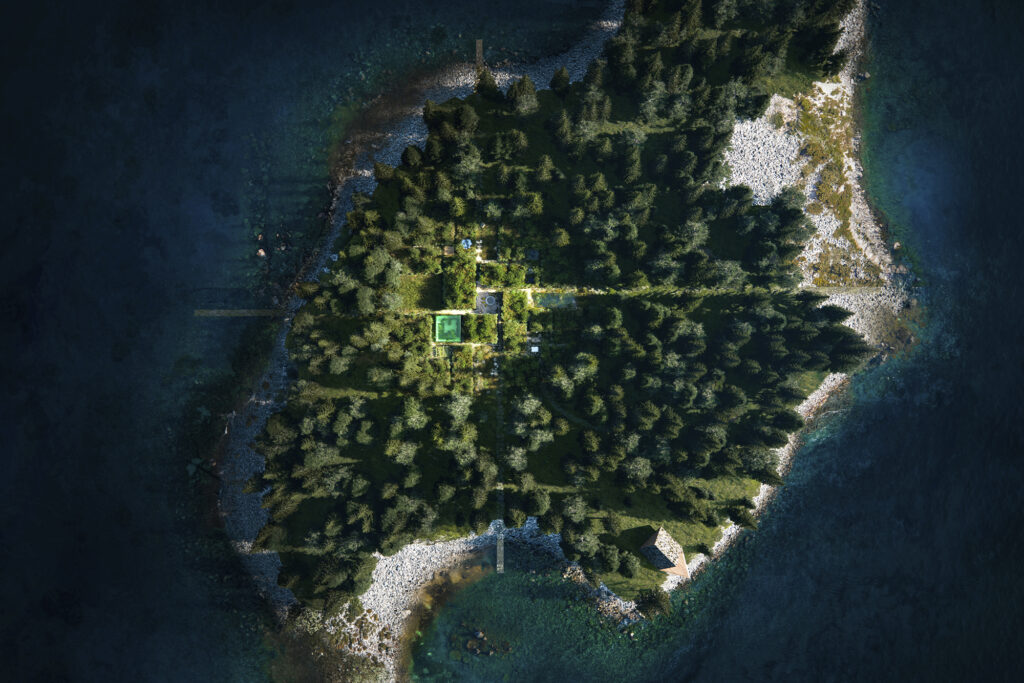
Vollebak is a fitting partnership for the BIG construction project — as a fashion label, they’ve turned heads by investing in eco-friendly clothing, merging style with cutting-edge tech. “Vollebak is using technology and material innovation to create clothes that are as sustainable and resilient as they are beautiful,” says Bjarke Ingels, Founder and Creative Director at BIG. “In other words, [they are] the fashion equivalent of BIG’s architectural philosophy,” he adds. With fashion mainstays like Dior making sustainable lines, it’s safe to say that Vollebak is at the forefront of fashion trends.
Renders pay tribute to the brands’ environmental ethos, framing serene Vollebak Island scenes like an art piece; outside, towering trees rise out of rocky cliffs, casting ephemeral shadows over ponds and pools — a sight to behold, for sure. Meanwhile, huge, sweeping windows let the sunlight flow into Earth House, sunbeams make the walls shimmer like earthy gems. Open spaces make surroundings all the more memorable: plazas and patios commune with woodsy actors, fostering up close and personal appreciation.
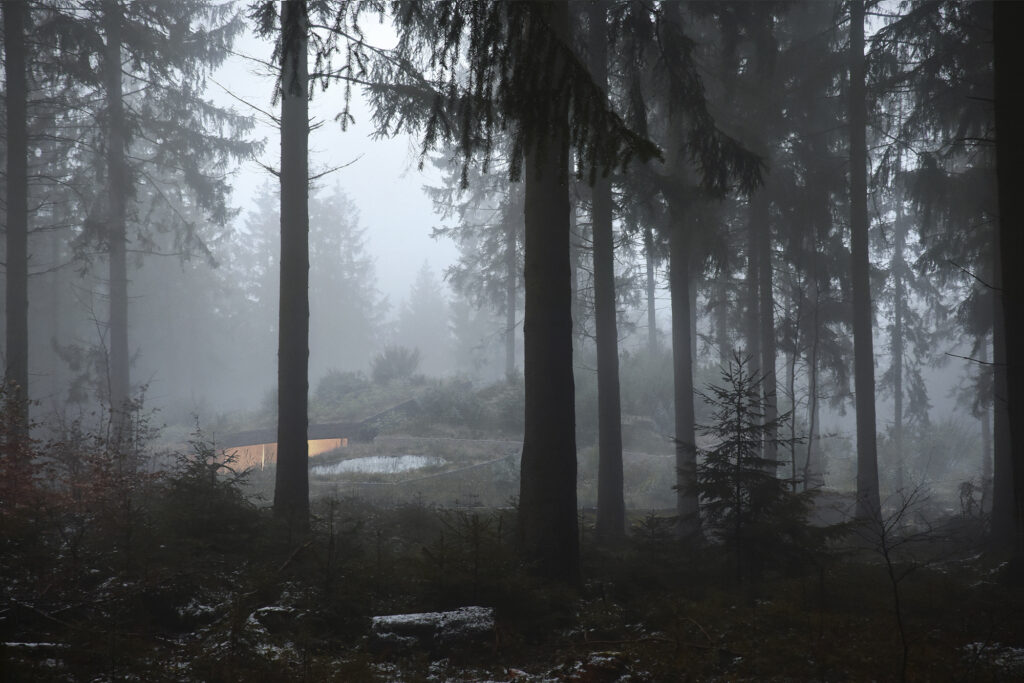
Further east, the Wood House annex will reward visitors who venture to the extremes. Residing on a far-out section of Vollebak Island, volatile conditions and one-of-a-kind lookouts characterize its surroundings. Luckily, the house has come prepared; its durable exterior, fashioned from sustainably-sourced island wood, will withstand even the most chaotic weather patterns. Not close enough to nature for you? Just wait — the facade will be able to open onto the ocean, allowing A-frame guests to see the vista under a (metaphorical) microscope.
The endeavour aims to blur the lines between land, art, and conventional architecture, brewing a structure that’s both hospitable and avant-garde. According to BIG, the rooms will “represent specific fragments of nature.” Whether they hang like the branches of a family tree or howl along with the Nova Scotia winds, we’re certainly putting our names on the waitlist.
Learn more about BIG’s project on Vollebak Island.
